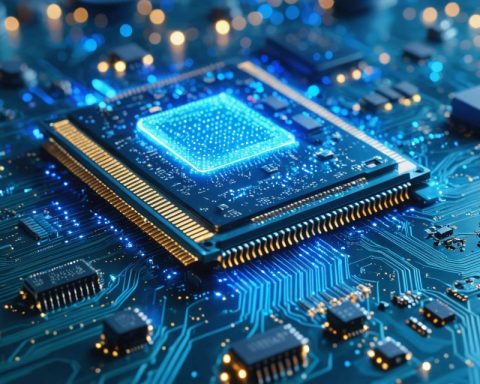The Rise of Humanoid Robotics
The global humanoid robot market is on a rapid ascent, expected to soar from USD 1.5 billion in 2023 to around USD 22.62 billion by 2030, with a staggering growth rate of 47% annually. Humanoid robots, designed to mimic human appearance and behaviors, are gaining traction not only in automation but also in diverse applications across various sectors.
As the demand for automation rises, humanoid robots are set to transform services in manufacturing, healthcare, and hospitality. This wave of innovation is primarily driven by significant technological advancements that make these robots more efficient and cost-effective. With growing use in military operations for intelligence-gathering and surveillance, the necessity for these robots is becoming increasingly clear.
Vietnam stands out as a key player, leveraging its manufacturing boom to incorporate humanoid robots for enhanced productivity. Meanwhile, Thailand’s government initiatives to boost industrial automation are fostering similar growth.
In Japan, leading companies are focused on addressing labor shortages, while South Korea emphasizes technological integration across various industries. The United States continues to pioneer developments, epitomized by Tesla’s innovative humanoid prototypes.
Across Europe, collaborative efforts between research and industry are shaping the future of humanoid robotics, tailoring solutions for healthcare and manufacturing sectors.
The humanoid robot revolution is just beginning, promising to redefine our interactions with technology in everyday life.
Societal and Environmental Implications of Humanoid Robotics
The swift ascent of humanoid robotics is set to bring significant changes not just in technology but across the broader spectrum of society and culture. As automation becomes more prevalent, industries such as healthcare, where robots can assist the elderly and disabled, could see improvements in quality of life. Yet, this shift raises questions about job displacement and the evolution of the labor market. Economists argue that while some roles may become obsolete, new opportunities will emerge, emphasizing the importance of reskilling and adapting to a changing job landscape.
The environmental consequences of this robotics revolution are also noteworthy. Humanoid robots can enhance efficiency in manufacturing, potentially leading to reduced waste and lower carbon footprints. However, the production and energy consumption associated with robotics technology could lead to increased environmental strain if not managed properly.
Looking forward, the long-term significance of humanoid robots may extend into realms such as personal assistance and companionship, reshaping societal interactions. As robots begin to integrate into daily life, they may influence our cultural narratives, prompting discussions surrounding ethics, privacy, and what it means to be human in an increasingly automated world.
The trajectory towards a more automated future is not merely about adopting new technologies; it represents a pivotal moment in rethinking our societal frameworks and responsibilities in the face of rapid innovation.
The Future of Humanoid Robotics: What You Need to Know
Understanding the Humanoid Robotics Landscape
The humanoid robot market is undergoing transformative growth, projected to leap from USD 1.5 billion in 2023 to USD 22.62 billion by 2030. This remarkable growth, characterized by an annual increase of 47%, reflects the rising demand for automation across crucial sectors, including manufacturing, healthcare, and hospitality. As technology continues to advance, humanoid robots are becoming increasingly sophisticated, enabling a broader range of applications.
Key Features and Innovations
Humanoid robots are specifically engineered to resemble human appearance and behavior, which enhances their effectiveness in performing tasks that require human-like interaction. Features such as advanced AI, machine learning capabilities, and enhanced dexterity are making these robots indispensable in various industries. The integration of sensors and responsive technologies enables them to interact with their environment in more intuitive ways.
Use Cases Across Industries
1. Manufacturing: Humanoid robots are being used for assembly line tasks, quality control, and logistics, streamlining operations and increasing productivity.
2. Healthcare: They assist in patient care, disbursement of medication, and performing routine tasks that relieve healthcare professionals.
3. Hospitality: These robots engage with customers, provide information, and enhance service efficiency in hotels and restaurants.
Pros and Cons of Humanoid Robotics
Pros:
– Efficiency: Automation leads to faster and more accurate task completion.
– Safety: Robots can handle hazardous materials and operate in risky environments.
– Cost Reduction: Long-term savings are achieved by minimizing human labor costs.
Cons:
– Initial Investment: High upfront costs for deployment and integration.
– Job Displacement: Potential reduction in employment opportunities for certain sectors.
– Technological Limitations: Current limitations in adaptability and emotional intelligence.
Market Trends and Predictions
The humanoid robotics market is poised for expansion, particularly in emerging economies where technology adoption is accelerating. Research indicates that automation will require close collaboration between robotics and humans to optimize workflows and enhance productivity. Industry leaders anticipate that as humanoid robots become more prevalent, regulations and standards will evolve to address ethical concerns and safety protocols.
Security Aspects and Challenges
The integration of humanoid robots raises important security considerations. Cybersecurity measures are essential to protect sensitive data and prevent unauthorized access to robotic systems. Furthermore, the need for comprehensive guidelines governing the use of autonomous robots in public and private settings is becoming increasingly critical.
Pricing and Specifications
The pricing for humanoid robots varies widely depending on their complexity and functionality. Basic models can start around USD 10,000, while advanced systems designed for specialized tasks might cost significantly more, often exceeding USD 500,000. Understanding the specifications—such as battery life, processing power, and application compatibility—is crucial for businesses considering investment in humanoid robotics.
Conclusion
The rise of humanoid robotics heralds a new era of technological interaction that promises to enhance productivity, safety, and efficiency across multiple sectors. As the market continues to evolve, staying informed about innovations and industry trends will be vital for businesses and consumers alike.
For more insights on robotics and technological advancements, visit Robotics Business Review.









